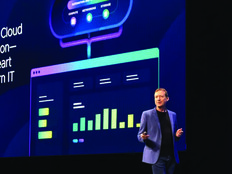Maximizing Efficiency With Automation While Ensuring Security
Automation is transforming government operations by streamlining repetitive processes such as data entry, compliance reporting and case management. By reducing manual workloads, agencies can minimize human error and accelerate workflows.
Artificial intelligence-driven tools further enhance efficiency by processing and analyzing data in real time, leading to faster decision-making and improved accuracy.
Robotic process automation plays a critical role in eliminating bottlenecks; handling high-volume, rules-based tasks such as claims processing; and procurement approvals. For example, the Internal Revenue Service is leveraging AI to enhance its operations, particularly in fraud detection and customer service.
Cloud-based automation also facilitates seamless remote work, decreasing reliance on physical paperwork and improving interagency collaboration. Key areas benefiting from automation include data entry — where AI can extract, validate and store information — drastically cutting processing times for permits, tax forms and applications.












